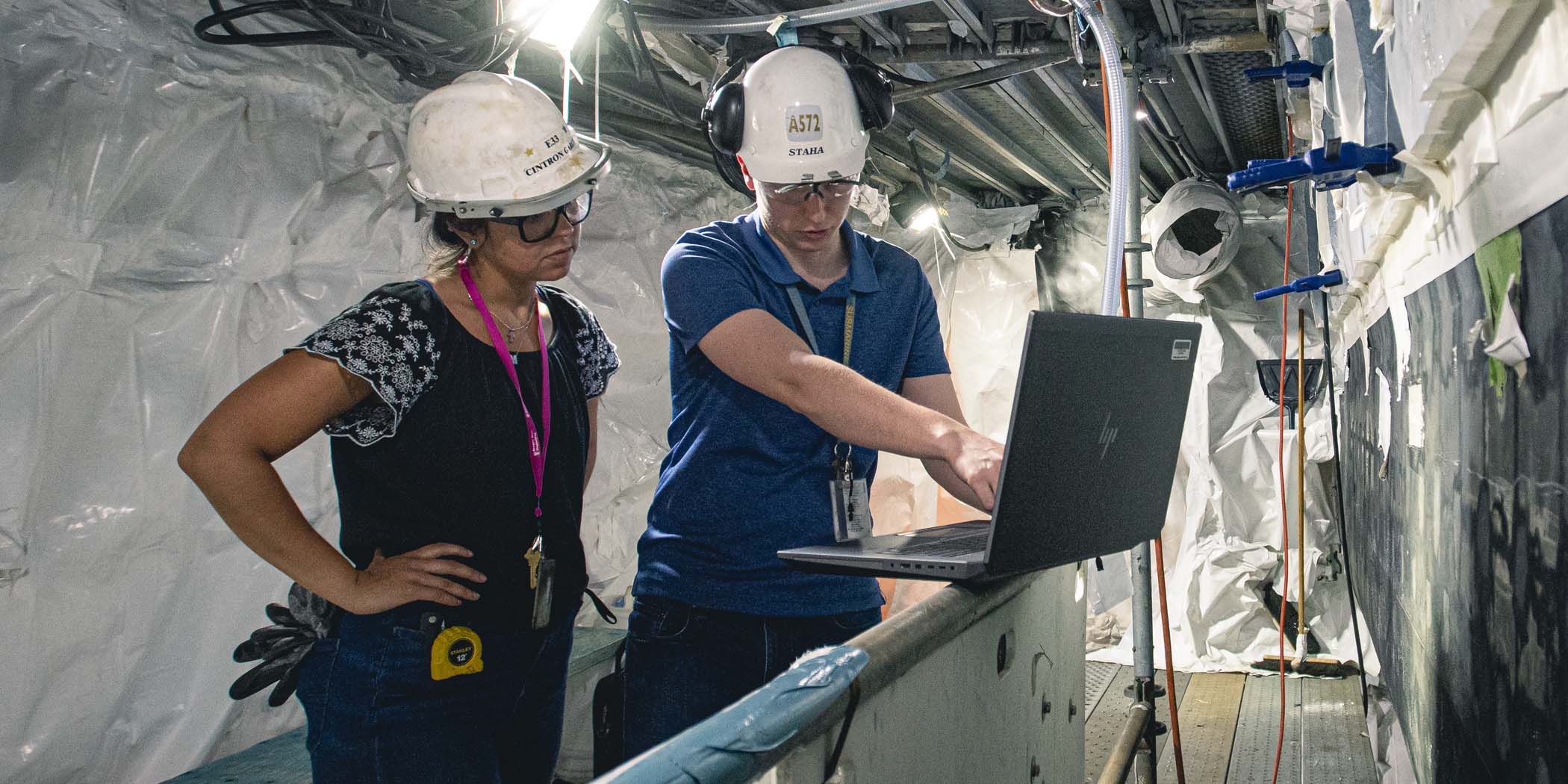
Modeling Teamwork
Published August 10, 2021
Mariana Cintron-Garcia and Bryan Staha, engineers who typically work in different areas of the shipyard, work together in June near the hull of Virginia-class submarine New Jersey (SSN 796). Photo by Ashley Cowan
Engineers in Newport News Shipbuilding’s Foundry use specialized software to model and simulate pours for metal castings. That same software is now helping shipbuilders simulate pours of a liquid polymer that is applied to submarine hulls.
“At the Foundry, our software is set up for metals. So the first challenge was trying to adapt the software to work for a different material,” said Bryan Staha (A572), an engineer in the Foundry who worked with colleagues in Coatings Technology and Materials Engineering (E33) to adapt the software.
While metal the Foundry typically deals with is a hot liquid that becomes solid as it cools, the polymer starts off cold and becomes solid as it heats up. “It was fundamentally the opposite of what my software was set up for,” Staha said. But it turns out the work was similar in scope.
Through trial and error and about eight months of work, the team was able to come up with a model that can be used to predict the outcome of a pour for the polymer.
“We’ve been using it to try to predict defects more so than timing. It allows us to adjust,” said Mariana Cintron-Garcia (E33). “This whole thing is really to ensure first-time quality and prevent the need for rework.”
Cintron-Garcia has worked with Staha and deckplate shipbuilders to assess the effectiveness of the modeling. “Everybody has been transparent about this whole process. I feel like that has really allowed us to improve and progress. Whether that’s between engineers or between engineers and trades, as long as we’re all on the same page, it works pretty well,”